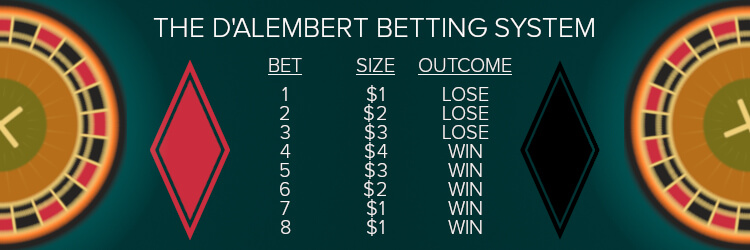
D’Alembert betting strategy is one of the most famous betting tactics in the world. It is based on the well-known d’Alembert formula. Let us tell you a few words about its creator.
Jean le Rond d’Alembert is a textbook example of a person making the best of what they have. Deserted by his officer father at a very young age, d’Alembert turned to physics and the theories of Isaac Newton.
The Frenchman examined kinetic energy, angular momentum and mechanical power. Let’s see how his interest in mathematics led him to create one of the most popular Roulette strategies.
D’Alembert Betting Strategy – Can It Lose?
We’ll show you in practice how to use d’Alembert strategy in Roulette.
To start with, it’s important to note that utilising the d’Albert system is relatively safe. So, if you follow the procedure that we’ll share with you, you should be fine.
Secondly, d’Alembert Roulette strategy is fitting for the even bets. In plain English, those bets who guarantee a 50% chance of winning will work well with this approach. Those bets are:
- Red/Black
- Even/Odd
- 1-18/19-36
Before you place your bet, you need to determine a unit. This will be the backbone of your betting according to d’Alembert.
The amount of money or chips can be as high or low as you’d like. However, bear in mind that you need to leave up some space for the sum to grow. So, do not make the spine of the game an amount that you can’t afford to double up.
Example
You bet $10.
If you win, your total profit will be $10. Your next bet should remain 10.
Should your next bet be a loss, you should double up your wager. So, at this point, you are betting $20.
Let’s say you hit another loss. The following bet needs to go up by the “backbone”, aka 10. Right now, you are betting $30. If more losses occur, you need to add another $10 to your wager.
Once you hit a win, you should subtract 10 from the current wager. In this particular example, you’d be betting $20 again.
And the identical pattern follows every round.
As a result, you get a moderately safe method. Why? The d’Alembertian approach moderates itself on every win.
To benefit from this strategy, you need to have at least one winning streak.
Reverse D’Alembert
No Roulette strategy can ever guarantee a 100% win. Roulette is, after all, a predominantly game of chance. Players can manipulate how much they lose and to lower the loss. However, they can do nothing to ensure a win in Roulette all the time.
Contre d’Alambert or Reverse d’Alambert is the approach opposite the original betting system.
The topic of this article is a medium-risk Roulette system. As such, it does not offer high gains. The same principle applies to its mirror reflection.
Reverse d’Alambert requires the same starting point. Choose the “backbone” based on your bankroll and place a bet. We’ll take $10 as an instance again.
If you win in the first round, your profit will be $10. Then, increase your bet by $10. Win the second time in a row to get to $20.
Naturally, after the win, you expand your wager by another $10. However, if you lose this time, you’ll end up with a -3 profit.
Not until you win again can you regain your losses. And what if you hit a losing streak?
Nevertheless, Contre d’Alambert typically ends up with a negative score. Therefore, Roulette69.com does not recommend this system.
Verdict
And as always, at the end of the article, we’re telling you our closing thoughts.
The fact of the matter is that the casino will always have the advantage in Roulette. This is also true for d’Alembert betting strategy. At any given point, your odds of winning are equal to the odds of losing.
The only thing you control with this Roulette strategy is how much you lose. Truthfully, D’Alembert can cater to some really low losses if executed properly.
So, if you want to employ the D’Alembert technique, we don’t blame you. It’s definitely easier than most of them, such as the Romanosky Roulette system.
On the other hand, it’s similar to the Martingale method, so you get to choose your fighter at your will.
The rule of thumb is to manage your budget wisely and see if you can afford the potential losses first.
